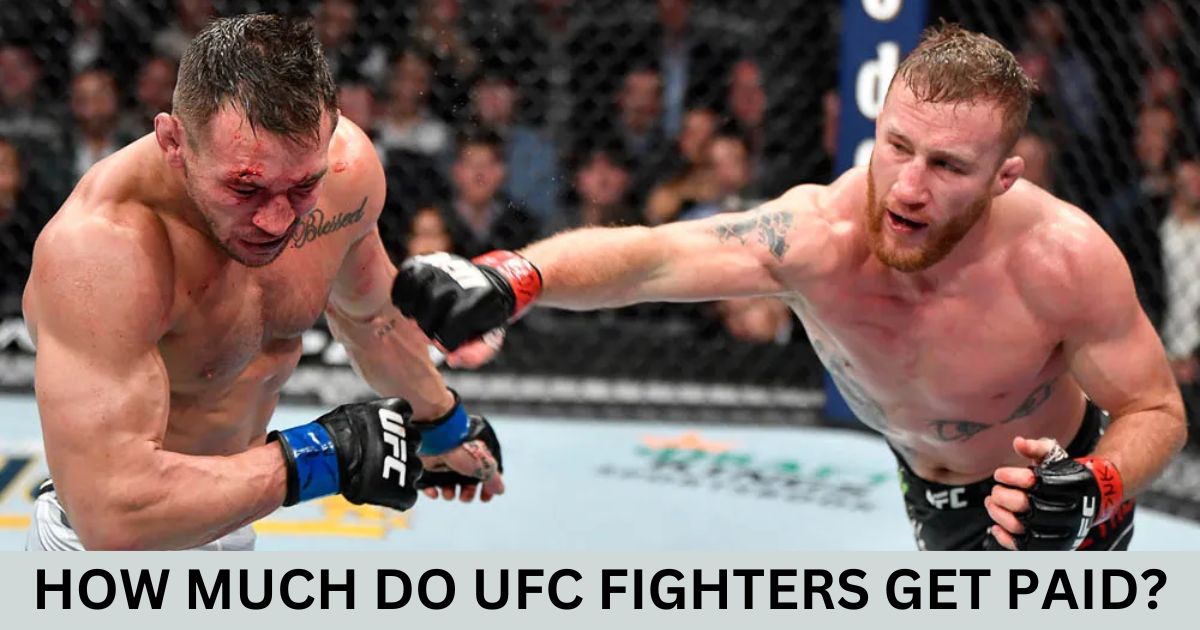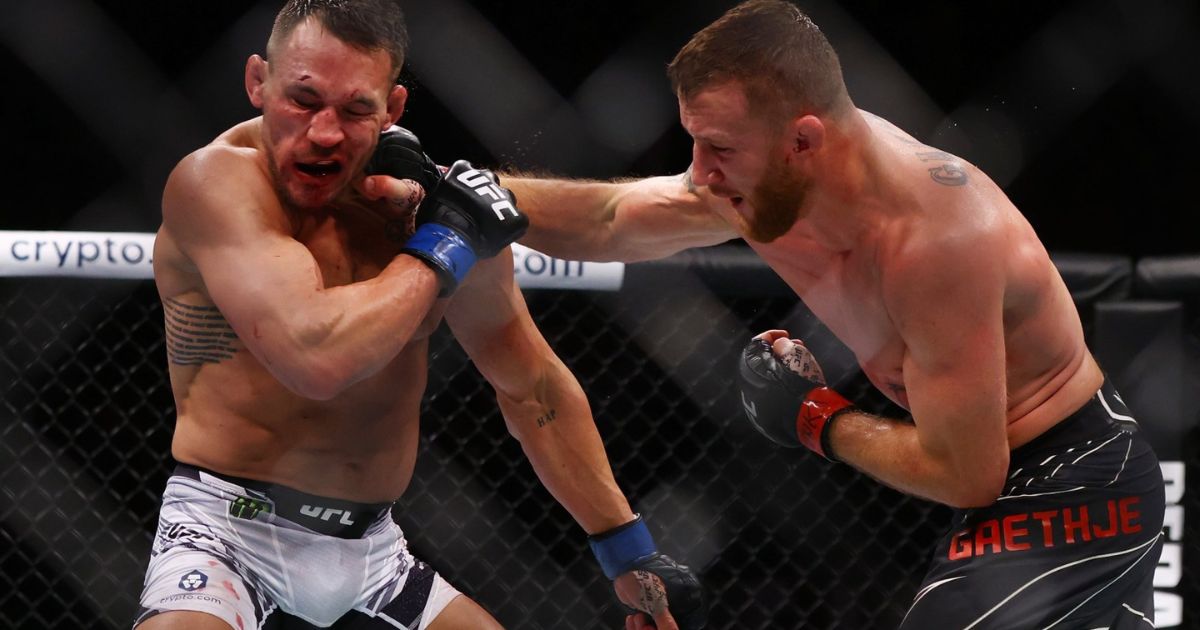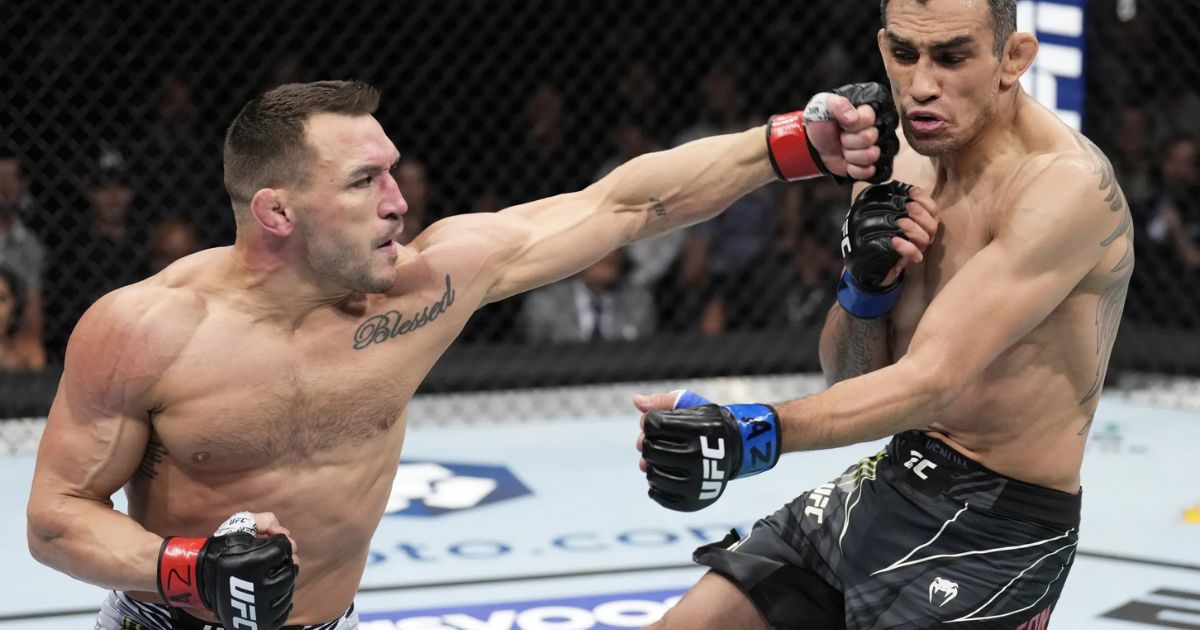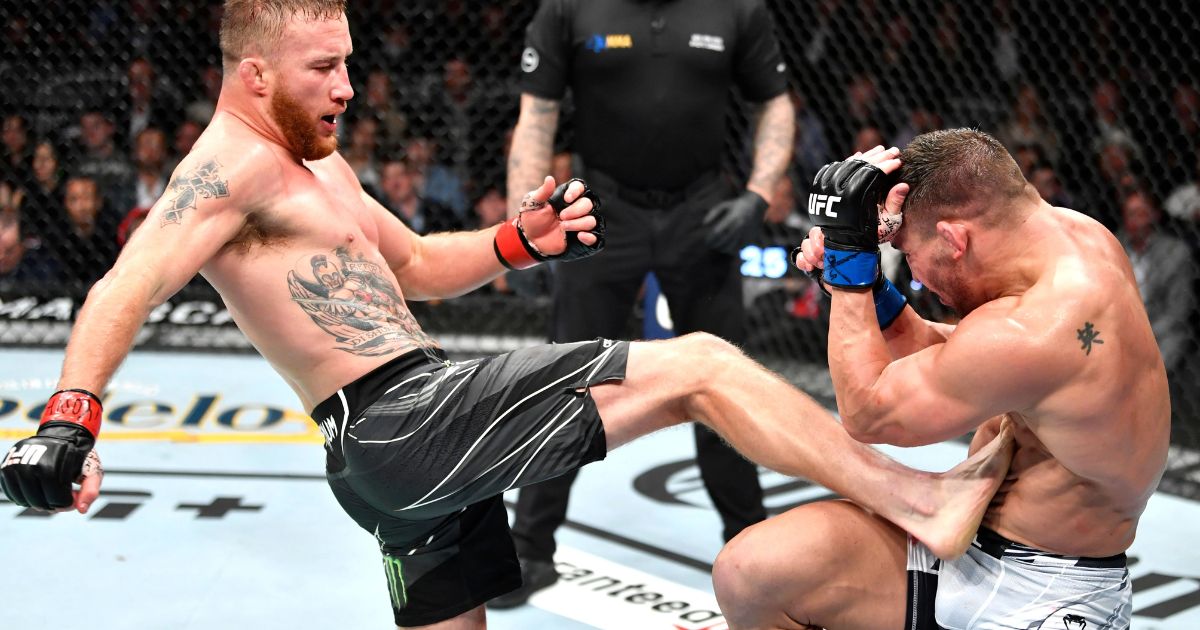The world of professional mixed martial arts (MMA) is filled with high-octane action, captivating narratives, and larger-than-life personalities. At the heart of this dynamic industry lies the Ultimate Fighting Championship (UFC), the undisputed leader in the sport. But as fans revel in the thrilling spectacle, a crucial question often arises: How much do UFC fighters actually get paid?
This comprehensive blog post delves into the intricate world of UFC fighter compensation, exploring the various factors that determine their earnings, the disparities between top stars and lesser-known athletes, and the ongoing debates surrounding the fairness of the UFC’s pay structure.
By shedding light on this complex topic, we aim to provide readers with a deeper understanding of the financial realities faced by the men and women who step into the Octagon.
The UFC’s Pay Structure
The UFC’s compensation model for its fighters is a complex and multifaceted system, influenced by a variety of factors. At the core of a fighter’s earnings is their base salary, which serves as the foundation for their take-home pay.
Base Salaries:
- Entry-level UFC fighters typically earn a base salary of $10,000 to $30,000 per fight. This level of compensation can make it challenging for these athletes to sustain a career in the sport, especially when considering the physical and mental toll of training and competing.
- Established and more experienced fighters can command base salaries ranging from $50,000 to $500,000 or more, depending on their drawing power, negotiating leverage, and the prominence of the event they are participating in.
Win Bonuses:
- In addition to their base pay, UFC fighters are eligible for win bonuses, which can double their total earnings for a given fight. These bonuses typically range from $10,000 to $100,000, depending on the fighter’s stature and the significance of the bout.
- The prospect of securing a win bonus serves as a powerful motivator for fighters, as it can significantly impact their overall earnings and financial security.
Performance Bonuses:
- The UFC also offers performance-based bonuses, such as “Fight of the Night,” “Performance of the Night,” and “Knockout of the Night” awards. These bonuses can add an extra $50,000 to a fighter’s earnings, providing additional incentives for thrilling performances that captivate the audience.
- These performance-based bonuses have become a coveted part of the UFC’s compensation structure, as they reward fighters who deliver the most entertaining and memorable fights.
Pay-Per-View Revenue Sharing:
- The UFC’s top stars, such as Conor McGregor and Ronda Rousey, have secured lucrative pay-per-view revenue-sharing deals, allowing them to earn a percentage of the event’s total revenue. This revenue-sharing model has enabled the sport’s biggest draws to earn millions of dollars per fight.
- While the majority of UFC fighters do not have access to these pay-per-view revenue sharing arrangements, the top-tier athletes who can command such deals have the potential to earn staggering sums of money.
Top UFC Fighter Salaries
The UFC’s pay structure has evolved over the years, with the highest-paid fighters commanding astronomical salaries that rival those of athletes in other major professional sports leagues.
Top Earners:
- Conor McGregor, the charismatic Irish superstar, is widely regarded as the highest-paid UFC fighter, with estimated earnings exceeding $30 million per fight. McGregor’s ability to draw massive pay-per-view numbers and his negotiating power as one of the sport’s biggest stars have allowed him to secure these record-breaking paydays.
- Other top earners include Khabib Nurmagomedov, Jon Jones, and Israel Adesanya, who have all secured multi-million-dollar paydays through a combination of base salaries, win bonuses, and pay-per-view revenue sharing.
Highest-Paid Fights:
- The 2018 fight between Conor McGregor and Khabib Nurmagomedov generated a reported $17.2 million in pay-per-view revenue, with the two fighters earning a significant portion of that. This marquee matchup showcased the earning potential for the UFC’s most prominent athletes.
- The 2016 rematch between Nate Diaz and Conor McGregor is estimated to have generated over $12 million in pay-per-view revenue, with the two fighters earning a substantial share of the event’s financial success.
Contrast with Lesser-Known Fighters:
- While the UFC’s top stars enjoy astronomical salaries, many lesser-known and up-and-coming fighters struggle to make ends meet. Entry-level UFC fighters can earn as little as $10,000 to $30,000 per fight, making it challenging to sustain a career in the sport, particularly when factoring in the costs of training, travel, and other expenses.
- This stark contrast in earnings highlights the significant disparities within the UFC’s compensation structure, where a small number of superstars reap the majority of the financial rewards.
Challenges with UFC Fighter Pay
Despite the eye-watering salaries of the UFC’s top stars, the promotion has faced significant criticism over the perceived disparity in fighter compensation.
Lack of Unionization:
- Unlike other major sports leagues, the UFC does not have a strong union or collective bargaining agreement in place, leaving fighters with limited negotiating power. This has led to concerns that the UFC’s dominant market position allows it to dictate terms and exploit fighters, especially those without significant bargaining leverage.
- Attempts to establish a UFC fighters’ union have faced resistance from the promotion, making it challenging for athletes to collectively bargain for better pay and benefits.
Comparisons to Other Sports:
- When compared to the compensation structures of other professional sports leagues, such as the NFL, NBA, and MLB, the UFC’s fighter pay appears significantly lower, even for its most prominent athletes. This has fueled debates about the fairness and sustainability of the UFC’s compensation model, with critics arguing that the promotion’s fighters deserve a larger share of the overall revenue.
- Proponents of higher fighter pay often point to the grueling physical and mental demands of MMA, as well as the short careers of most fighters, as justifications for increasing compensation levels.
Calls for Reform:
- Advocacy groups and fighter representatives have repeatedly called for reforms to the UFC’s pay structure, demanding higher base salaries, better healthcare benefits, and a more equitable revenue-sharing model. These calls for change have gained momentum, but the UFC’s resistance to such measures has made meaningful progress difficult to achieve.
- The ongoing debates around fighter pay have become a central issue in the sport, with many arguing that the current system is unsustainable and detrimental to the long-term health and development of the UFC’s athlete pool.
Improving UFC Fighter Compensation
As the debates around UFC fighter pay continue, various proposals and ideas have emerged to address the perceived imbalances and improve the livelihoods of these elite athletes.
Revenue Sharing Models:
- One of the primary suggestions is the implementation of a more equitable revenue-sharing model, where fighters receive a larger percentage of the UFC’s overall revenue. This could involve setting minimum salary requirements, establishing a fighters’ union, or negotiating collective bargaining agreements.
- By distributing a more significant portion of the UFC’s profits to its athletes, this approach could help to address the current pay disparities and provide a more sustainable path for fighters to build careers and secure their financial futures.
Increased Bonuses and Incentives:
- Expanding the availability and scope of performance-based bonuses and incentives could provide additional avenues for fighters to earn higher compensation. This could include increasing the payouts for “Fight of the Night,” “Performance of the Night,” and other performance-related awards.
- By incentivizing thrilling performances and rewarding the athletes who deliver the most memorable moments, the UFC could create a system that better aligns with the interests of both the promotion and its fighters.
Healthcare and Benefits:
- Improving the healthcare and benefits available to UFC fighters, including coverage for medical expenses and long-term care, has been a key demand from advocates. Enhancing these support structures could help alleviate the financial burden on fighters and ensure their well-being during and after their careers.
- Providing comprehensive healthcare and benefits would demonstrate the UFC’s commitment to the long-term welfare of its athletes, rather than solely focusing on short-term profitability.
Transparency and Accountability:
- Calls for greater transparency in the UFC’s financial operations and decision-making processes have also been raised, as some argue that a lack of visibility has contributed to the perceived pay disparities. Increased accountability and oversight could help build trust and foster more equitable compensation practices.
- By opening its books and decision-making to greater scrutiny, the UFC could address concerns about the fairness of its pay structure and demonstrate a commitment to addressing the needs of its fighters.
Making Money in MMA
The Ultimate Fighting Championship (UFC) has become the premier professional mixed martial arts (MMA) organization, attracting the world’s top fighters and captivating fans around the globe. While the sport’s popularity has soared, the compensation for UFC competitors has been a subject of much discussion and debate.
To understand how much UFC fighters get paid, it’s important to first examine the various revenue streams available to these athletes. Beyond their fight purses, top UFC stars can also earn a significant portion of their income from pay-per-view (PPV) points, lucrative sponsorship deals, and other business ventures. The more popular and successful a fighter is, the more they can leverage their drawing power to command higher paychecks.
What Is The Average UFC Fighter Salary?
According to industry data, the average UFC fighter salary falls somewhere between $30,000 to $50,000 per year. However, this figure represents a wide disparity, as a small percentage of the roster’s elite stars earn millions, while the majority of competitors take home significantly less.
The UFC’s compensation structure is largely tied to a fighter’s ranking, experience level, and negotiating power. Champions and fan-favorite headliners can earn show money in the six-figures, plus sizeable PPV bonuses. In contrast, newcomers and lower-ranked fighters may only receive $12,000 to $24,000 for a single bout, with limited opportunities for additional income streams.
How Much Do UFC fighters Make Per Fight?
The exact amount a UFC fighter earns per fight can vary greatly, depending on the terms of their individual contract. However, the standard payout structure typically consists of two main components:
Show Money: This is the base amount a fighter receives simply for agreeing to compete, win or lose. Show money can range from $10,000 for newer athletes up to $500,000 or more for the promotion’s biggest stars.
Win Money: In addition to their show money, fighters also receive a bonus if they emerge victorious. Win money typically ranges from an extra $10,000 to $50,000, depending on the fighter’s stature and the significance of the bout.
Other potential earnings include performance-based bonuses (e.g., “Fight of the Night,” “Performance of the Night”) as well as a share of the PPV revenue for fighters who compete in the main event.
How Many UFC Fighters Earn More Than $1 Million?
While the vast majority of UFC fighters struggle to make ends meet, a select few have managed to join the exclusive club of million-dollar earners. Estimates suggest that only around 50 to 100 competitors on the UFC roster have surpassed the $1 million mark in career earnings.
These top-tier athletes are typically either long-reigning champions, high-profile superstars, or fighters who have leveraged their popularity into lucrative sponsorship and business deals. Names like Conor McGregor, Khabib Nurmagomedov, and Jon Jones headline this elite group, often earning tens of millions per fight through PPV points and other revenue streams.
Who is the Highest-Paid UFC Fighter?
When it comes to the highest-paid UFC fighter, Conor McGregor stands alone at the top. The Irish sensation has shattered records, earning over $100 million for his blockbuster fight against Floyd Mayweather in 2017, and routinely commanding eight-figure paydays for his UFC bouts.
Other UFC fighters who have reached the upper echelon of earnings include Brock Lesnar, Ronda Rousey, and Khabib Nurmagomedov. However, McGregor’s combination of supreme fighting skills, larger-than-life personality, and immense crossover appeal have made him the undisputed king of UFC paydays.
Who Is The Lowest-Paid UFC Fighter on Roster?
At the other end of the spectrum, the lowest-paid UFC fighters on the roster often struggle to make a living wage. Entry-level competitors may only receive the promotion’s minimum purse of $12,000 ($10,000 to show, $2,000 to win), which can be further reduced by training expenses, cornerman fees, and taxes.
While the UFC has taken steps to improve fighter compensation in recent years, many up-and-coming athletes still face significant financial hardship. This is especially true for those competing on the preliminary cards, where the stakes are lower and the earning potential is much more limited.
Why Do Some UFC Fighters Get Paid So Much Less?
The wide pay disparity among UFC fighters can be attributed to several key factors. First and foremost, a fighter’s drawing power and popularity play a crucial role in determining their earning potential. The promotion’s top stars who can consistently sell tickets and PPV buys command the highest salaries, while lesser-known athletes have little leverage to negotiate better deals.
Furthermore, the UFC’s contractual structure and negotiation process also contribute to the pay gap. Experienced veterans with strong bargaining positions can secure more favorable terms, while newcomers and journeymen fighters often have to accept whatever contracts the promotion offers.
Lastly, the sheer volume of fighters on the UFC roster means that the majority will always occupy the lower tiers of the pay scale. With limited roster spots and fierce competition, many athletes are willing to accept lower salaries for the opportunity to compete on the sport’s biggest stage.
Very Few Make The “Big Bucks”
While the UFC has minted a few bona fide millionaires, the reality is that the vast majority of fighters on the roster will never reach those stratospheric earnings levels. Industry estimates suggest that only around 5-10% of UFC competitors earn seven-figure salaries, with the remaining 90-95% subsisting on far more modest incomes.
This stark contrast highlights the financial uncertainty and pressure faced by many UFC athletes. Even for those who reach the pinnacle of the sport, the potential for a career-ending injury or loss of drawing power can dramatically impact their earning potential. For the majority of fighters, the dream of striking it rich in the Octagon remains elusive, despite their immense skills and dedication.
Money-Making Opportunities
To supplement their fight purses, savvy UFC competitors have explored various money-making avenues beyond the confines of the Octagon. Lucrative sponsorship deals, endorsement contracts, and business ventures can provide a significant boost to a fighter’s annual earnings.
Top stars like Conor McGregor, Ronda Rousey, and Jon Jones have capitalized on their mainstream popularity to secure lucrative sponsorships with global brands. Meanwhile, some fighters have launched their own clothing lines, opened gyms, or invested in other entrepreneurial endeavors to diversify their income streams.
Additionally, opportunities like pay-per-view points, fight night bonuses, and the UFC’s fighter outfitting deal with Reebok can also contribute to a fighter’s overall compensation. By maximizing these additional revenue sources, the most business-savvy UFC competitors can significantly augment their base fight purses.
Conclusion
The world of UFC fighter pay is a complex and often controversial topic, with a wide range of factors influencing the earnings of these elite athletes. While the sport’s top stars enjoy astronomical salaries, the perceived lack of fairness and equity in the UFC’s compensation model has sparked ongoing debates and calls for reform.
As the UFC continues to grow and thrive, the need for a more balanced and sustainable approach to fighter pay will only become more pressing. By addressing the challenges, exploring innovative solutions, and prioritizing the well-being of its athletes, the UFC can position itself as a leader in fair and equitable compensation practices, ultimately elevating the sport and its participants to new heights.
Also Read this Blog:















